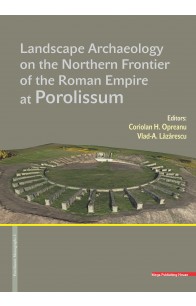Rezultate căutare pentru 'Vlad Andrei L��z��rescu'
„The frontiers of the Roman Empire, over 5000 km long, stretch from the Atlantic coast of Scotland, along the Rhine and the Danube, also enclose the Banat region and Transylvania, then going down along the Oriental Carpathians to the Black Sea; from the southern coast of the Black Sea they continue towards the Near East until the Red Sea; then, in North Africa, they line the edge of the Sahara desert until the Atlantic coast of Morocco. Over this entire area, visible traces of fortifications, roads and settlements are still preserved, but numerous monuments still lay hidden underneath the earth. Despite the fact that the Roman frontiers crossed regions with different relief and climate, they constitute a whole in that they were designed to protect Roman territories. The research of these monuments and the preservation policy regarding them was and is unequal in the various presentday states on whose territory traces of the Roman frontier are to be found. Consequently, in the ‘80s of the 20th century, the idea of globally protecting the Roman frontiers, viewed as a unitary monument, was met. In 1987, Hadrian’s Wall in United Kingdom was declared a UNESCO monument. It was followed in 2005 by the German-Raetian sector, on which occasion the UNESCO committee decided to set up the ‘Frontiers of the Roman Empire’ site. (...)
This project through its complexity generated an interdisciplinary approach of the proposed subject stimulating such future attempts in the archaeological research field. By using the latest technical methods of non-destructive investigation the project did not damage the stratigraphy of the archaeological site obtaining instead a high amount of data otherwise time consuming judging from the archaeological excavations perspective contributing also to the preservation of the cultural heritage.” - Introduction
Jean-Jacques Wunenburger & Corin Braga, Introduction
Identités collectives et sociales
Jean-Jacques Wunenburger, L’identité : un paradoxe entre rationalité et imaginaire
Jean-Pierre Sironneau, Mythe et identité dans les idéologies politiques
Alberto Filipe Araújo, Rogério de Almeida & Mariana Tambara, Identité narrative et imaginaire social
Stéphane F. Roume, Du « nous devenons » athénien au « on est » contemporainMaría Noel Lapoujade, Identités construites dans les sociétés gazeuses
Paolo Bellini, Le dualisme et la civilisation post-moderne
Identités ethniques et nationales
Perrine Val, Imaginer une Allemagne socialiste : le rôle du cinéma dans la construction de l’identité nationale est-allemande
Marta Ples-Bęben, L’homme de charbon. La Haute-Silésie en tant que région imaginaire
María Carreira López, La Galice, pays de la Coupe
Véronique Magaud, Imaginaires de l’identité collective au prisme d’événements sidérants
Hichem Ismaïl, Fractures identitaires dans Rue des Tambourins de Taos Amrouche
Hugo Francisco Bauzá, La célébration des festivités indigènes (le carnaval et la Pacha Mama) dans le Nord-Ouest argentin comme murs défensifs face à la mondialisation
Danielle Perin Rocha Pitta, Création et expression d’identités « tigrées » au Brésil
María de la Luz Maldonado Ramírez, Langue, danse et migration : identité autochtone au Mexique depuis les marges
Hyun-sun Dang, Le sentiment ethnique coréen, han恨, et sa fonction de guérison psychosociale dans le contexte historique de l’Asie de l’Est du XVIIe siècle
Makoto Sekimura, L’identité humaine et la spatialité dans la culture japonaise
Ruxandra Cesereanu, Garden of Paradise: Japanese Identity in Sei Shonagon’s The Pillow Book
Identités locales et urbaines
Luciano Gutierres Pessoa, Of Earth and Breath – Landscape and Psyche in the Imaginaries of Identity
Arthur Simões Caetano Cabral & Vladimir Bartalini, Paysage et identité. Ambiguïtés et ambivalences des images
María Flores-Fernández, Identités de Pandore : à la rencontre du paysage comme image de soi
Valéria Cristina Pereira da Silva, Venise des deux côtés du miroir : Imaginaire et identité entre l’amour et la mort
Artur Rozestraten, Images photographiques, imaginaires urbains et identités à Lyon : entre la visibilité et l’invisibilité
Imene Lydia Souici, Entre renouveau et historicisme : les imaginaires arabo-andalous dans l’architecture de l’Algérie
Identités virtuelles et numériques
Ana Taís Martins, Possédés par l’image de soi. Les identités, les identifications et l’inconscient collectif sur les réseaux sociaux
Berenika Dyczek, Les interactions virtuelles – identité imaginaire ou réelle ?
Fanfan Chen & Cheng-En Tsai, Revisiting Human Identity vis-à-vis AI Evolution
Philippe Taupin, Expérience et paradoxes proxémiques.
Prolégomènes à une mythanalyse de l’expérience de distanciation physique




